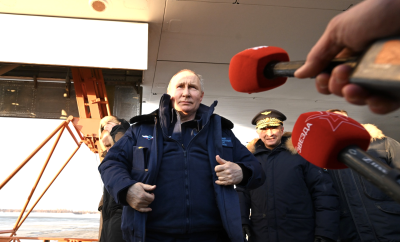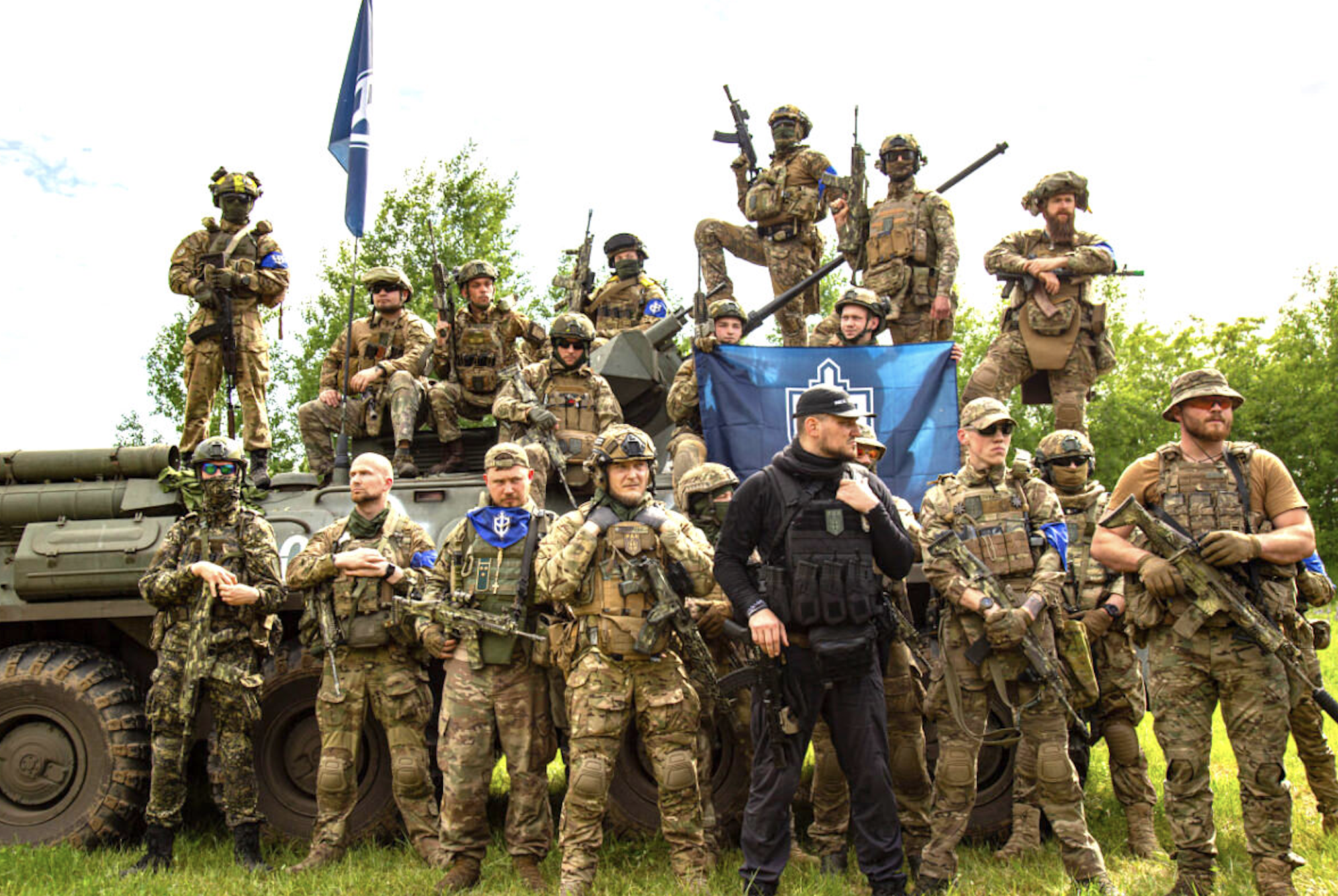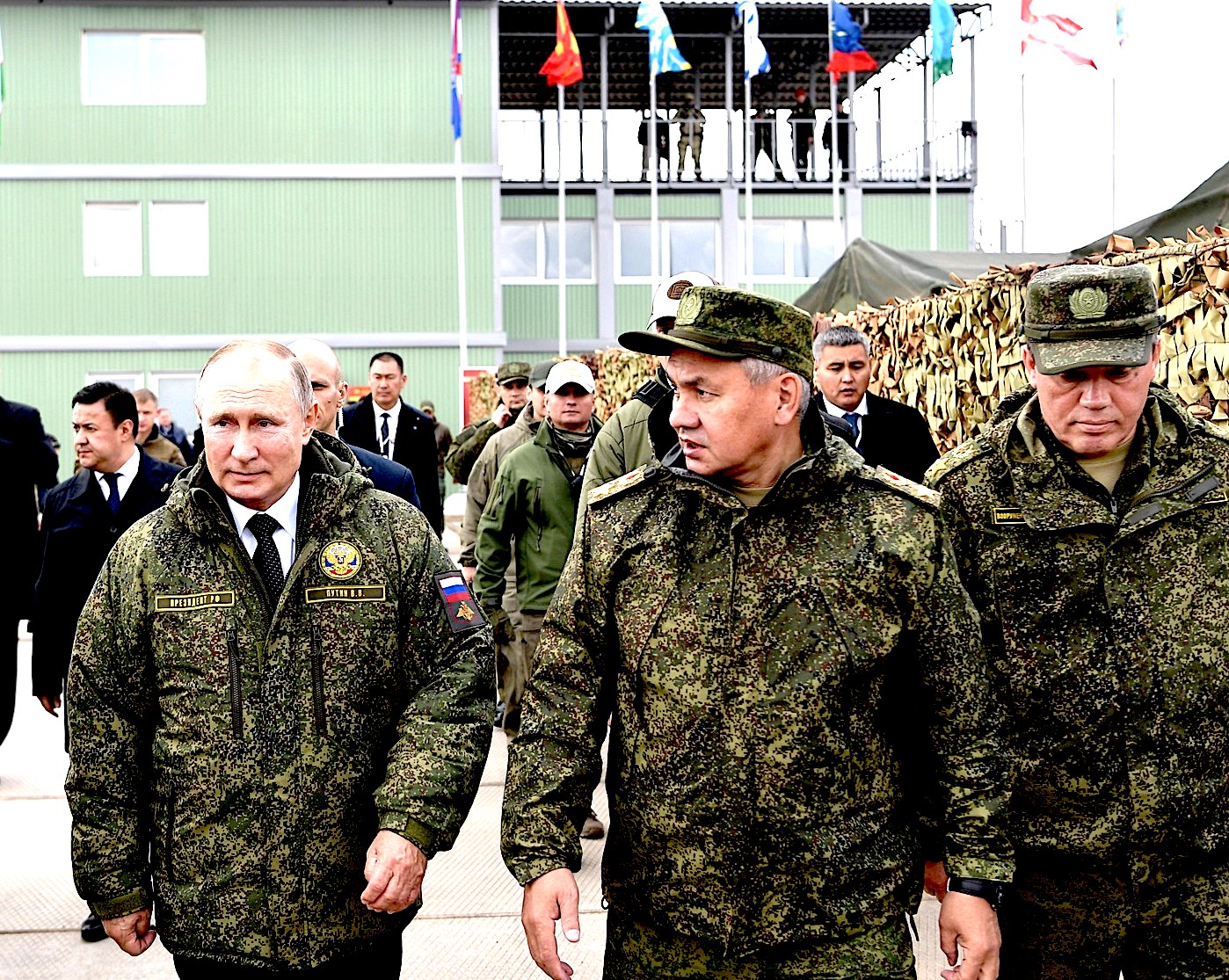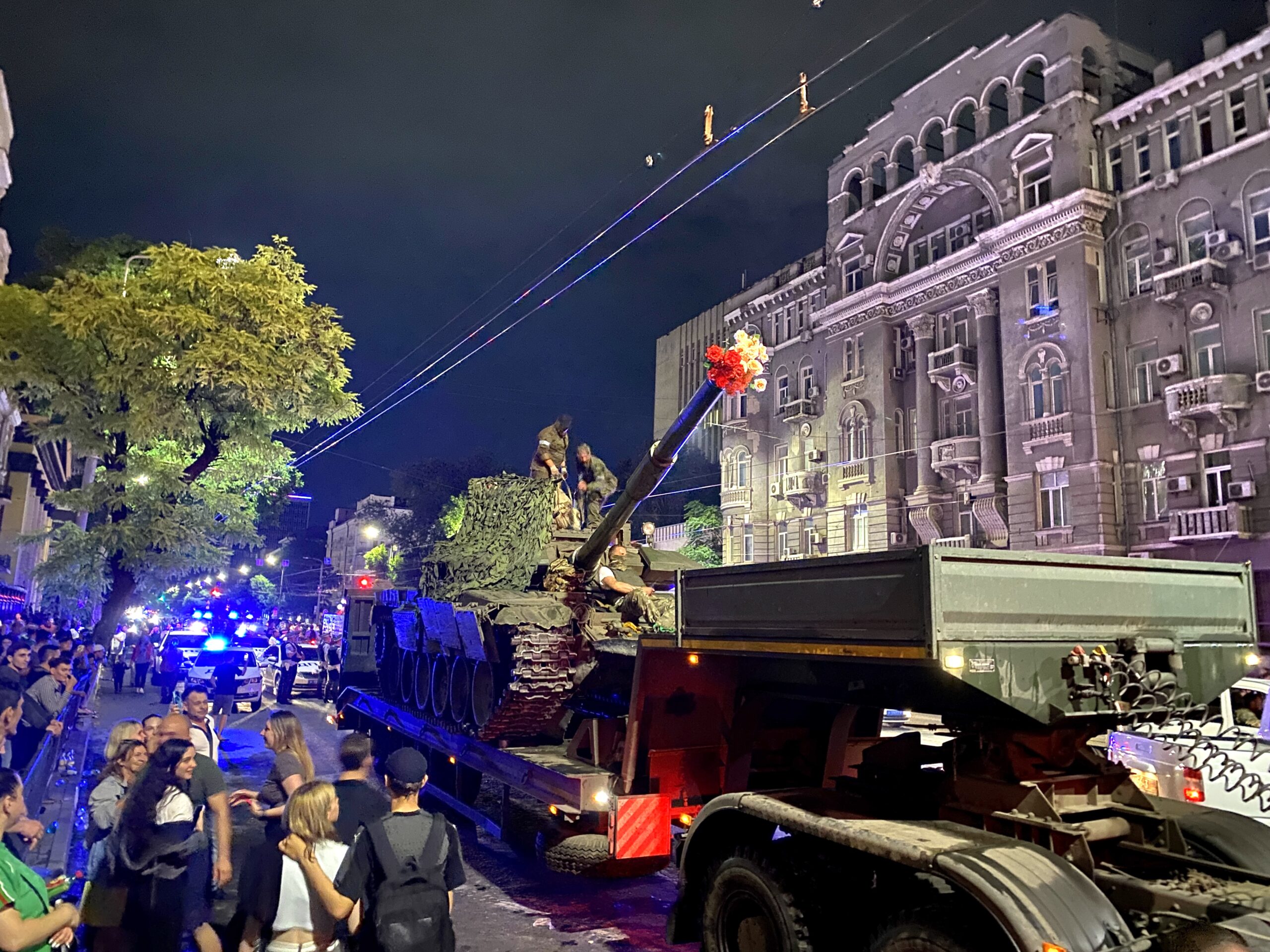
All Global Research articles can be read in 51 languages by activating the Translate Website button below the author’s name (only available in desktop version).
To receive Global Research’s Daily Newsletter (selected articles), click here.
Click the share button above to email/forward this article to your friends and colleagues. Follow us on Instagram and Twitter and subscribe to our Telegram Channel. Feel free to repost and share widely Global Research articles.
Global Research Fundraising: Stop the Pentagon’s Ides of March
***
In the days leading to the Russian presidential election that concluded on Sunday, a network of three Russian paramilitary organizations working under the auspices of the Main Directorate of Intelligence of the Ukrainian Ministry of Defense, or GUR, launched a series of attacks on the territory of the Russian Federation.
The purpose of the attacks was clear — to disrupt the three-day Russian presidential election by creating an atmosphere of weakness and impotence around President Vladimir Putin designed to undermine his authority, legitimacy and appeal at the voting booth.
The operation was months in the planning, and involved the Russian Volunteer Corps (RDK), the Freedom of Russian Legion (LSR), and the Siberia Battalion. All three of these organizations are controlled by the GUR, whose spokesman announced the attacks.
Left unsaid is the degree to which the C.I.A. was involved in what amounts to an invasion of the territory of the Russian Federation by forces operating under the umbrella of what is openly acknowledged to be a proxy war between the United States and its NATO allies against Russia.
While Ukraine maintains the attacks by the RDK, LSR, and Siberia Battalion are the actions of “patriotic Russians” opposed to Putin, the involvement of the GUR in organizing, training, equipping, and directing these forces makes their attack on Russian soil a direct extension of the proxy war between Russia and the West.
Given the extensive involvement of the C.I.A. in the work of the GUR, it is highly unlikely that an action of this scope and scale could have been executed without the knowledge of the C.I.A. and in the attacks, including its goals and objectives.
Indeed, the presence of high-end U.S. military equipment, including M-2 Bradley infantry fighting vehicles (IFVs), in the order of battle in the attack by Russian insurgent forces points to a direct U.S. role, as does the political nature of the mission of election disruption, which has been a long-term objective of the C.I.A. in Russia stretching back decades.
2014

Chief Directorate of Intelligence of the Ministry of Defence of Ukraine in Kiev, 2013. (Dmitry Trikutko, Wikimedia Commons, CC BY-SA 3.0)
The C.I.A.’s relationship with the GUR is well-established, dating back to 2014, according to The Washington Post, when the C.I.A. worked with the GUR to establish a network of bases along the Ukrainian-Russian border from which to conduct intelligence operations against Russia, including missions that involved operations on Russian soil.
The C.I.A. intercepted Russian communications, captured Russian drones for follow-on technical exploitation, and oversaw the recruitment and operation of spy rings operating on Russian soil.
In the lead up to Russia’s initiation of the Special Military Operation (SMO) against Ukraine on Feb. 24, 2022, the C.I.A. expanded its relationship with the GUR to include specialized training provided by members of the Ground Division of the C.I.A.’s Special Activities Group, responsible for covert paramilitary operations.
[C.I.A. first began secret operations using fascists against Moscow in 1948 with the CARTEL and later AERODYNAMIC programs. See: On the Influence of Neo-Nazism in Ukraine.]
The training was focused on unconventional and guerrilla warfare skills that would help facilitate the creation and sustainment of anti-Russian insurgencies carried out by “stay behind” teams operating on any Ukrainian territory that was occupied by Russian forces.
After the SMO began, ethnic Russians who had served since 2014 within the ranks of the neo-Nazi, Ukrainian nationalist, paramilitary organization known as the Azov Regiment organized themselves into a separate organization known as the Russian Volunteer Corps, or RDK.

Members of the Russian Volunteer Corps on 24 May 2023. (Wikimedia Commons, CC BY 4.0)
The RDK modeled itself after the Russian Liberation Army, an entity organized, trained, and equipped by the Nazi Germans during World War Two which was comprised of Russian prisoners of war. Russians today often refer to the RDK members as “Vlassovites,” after Russian General Andrei Vlasov, who was captured by the Germans and later defected to their cause.
Vlasov recruited Russian prisoners of war into what was known as the Russian Liberation Army, which eventually consisted of two divisions comprising some 30,000 troops. Most of Vlasov’s “army” were either killed in combat, or taken prisoner by the Soviet Union, where they were treated as traitors and punished accordingly (the enlisted sentenced to lengthy terms in the Gulag, and the leaders hung.) The RDK was able to attract several hundred former Azov fighters and new recruits into its ranks.
A second ethnic Russian military unit, created in the aftermath of the SMO, is comprised primarily of Russian military defectors and prisoners of war. Known as the Freedom of Russia Legion (LSR), it consists of several hundred soldiers organized into two battalions. The LSR operates as part of the International Legion of the Ukrainian Territorial Army.
However, it is controlled by the GUR, according to GUR chief Kyrylo Budanov, as opposed to the Ukrainian Ministry of Defense.
The third ethnic Russian military unit operating with Ukraine is the so-called Siberian Battalion, composed of ethnic Russians and non-Russian ethnicities from the Siberian territories of the Russian Federation.
The members of this formation are volunteers from Russian Siberia who are opposed to Putin’s government. Like the LSR, the Siberian Battalion operated as a GUR-controlled part of the Ukrainian Territorial Army and is said to consist of around 300 men, according to a report in Euronews.
The incursion over the weekend by the GUR-controlled, anti-Putin, Russian forces is not the first instance of its kind. In March and April 2023, several small cross-border attacks were carried out by forces affiliated with the Russian Volunteer Corps RDK.
More telling was a larger attack made on May 22, 2023. The timing of this attack, which lasted less than a day, seemed to coincide with the fall of the hotly contested city of to the Russian private military company Wagner.
The capture of Bakhmut by Wagner signaled the beginning of a rapid deterioration in relations between the head of the Wagner Group, the one-time Putin loyalist, insider Yevgeny Prigozhin, and the Russian military leadership, in particular Minister of Defense Sergei Shoigu and Chief of the General Staff General Valeri Gerasimov.

From left: Putin, Shoigu and Gerasimov during a 2019 military exercise. (Kremlin.ru, Wikimedia Commons, CC BY 4.0)
On June 23, 2023, Prigozhin led thousands of his Wagner fighters in a rebellion which saw him occupy the Russian headquarters of the SMO in Rostov-on-Don, and march on Moscow. While the rebellion was quashed within 24 hours, many of the Wagner fighters said that they had participated only because they were told they would be deploying on to Russian soil, where Wagner was prohibited by law from operating, to defend against further incursions from the RDK.
Information that emerged after Prigozhin’s abortive rebellion showed that the Wagner leader had been in frequent contact with the Ukrainian GUR in the months leading up to his insurrection, and that the RDK attacks were part of a coordinated effort orchestrated by the GUR, designed to weaken and perhaps bring down Putin’s government.
The Biden administration acknowledged having detailed intelligence beforehand about Prigozhin’s revolt, and yet did not provide any warning to the Russian government, suggesting that the C.I.A. was at a minimum cognizant of the GUR operation and tacitly supported it.

A crowd in Rostov-on-Don watching a tank with flowers sticking out of its muzzle during the so-called Wagner Rebellion, June 24, 2023. (Fargoh, Wikimedia Commons, CC0)
The presence of U.S. weapons, including Humvee vehicles, in the possession of the RDK fighters on the weekend likewise hinted at a broader U.S. involvement in their training and equipping, involvement which, given the prohibition on the deployment of U.S. military forces in a training capacity on Ukrainian soil since the initiation of the SMO, pointed to the C.I.A.’s Ground Division as the facilitating unit.
The Russian government has assessed that the total strength of the GUR-controlled forces that attacked Russia in the leadup to the presidential election completed on Sunday numbered around 2,500 men, supported by at least 35 tanks and scores of armored vehicles, including a significant number of U.S.-supplied M-2 Bradley IFVs.
The scope and scale of the military operation, which included helicopter-borne forces inserted behind Russian lines, is such that it could not have been accomplished without the knowledge of the C.I.A. Moreover, the tactics and equipment used (helicopter raids, M-2 Bradley vehicles) strongly suggest a more direct role by the C.I.A. in both the planning and training of the mission and the troops involved.
The C.I.A.’s Ground Division is composed of veterans of the C.I.A.’s secret wars in both Syria and Afghanistan, where the C.I.A. trained secret armies to carry out their own secret wars in support of C.I.A. objectives.

Ukrainian special forces unit in Kabul during the 2021 Kabul airlift. (Defence Intelligence of Ukraine, Wikimedia Commons, CC BY 4.0)
The discrediting of Putin’s government with an eye to his removal from power has been a goal of the C.I.A. since 2005, when the C.I.A., together with British intelligence, began actively working to create viable political opposition movements inside Russia.
While these efforts have largely failed (the recent death in a Russian prison of Alexei Navalny, believed to have been a creation of the C.I.A., underscores the scope and scale of this failure), the C.I.A.’s covert political warriors in the Political Action Group of the Special Activities Center continue to try to undermine Putin through various means.
Given the Russian government’s stated goal of producing a large turnout in the election as a way to certify Putin’s legitimacy, disrupting voter turnout by creating instability and a lack of confidence would be precisely the kind of cause and effect relationship the C.I.A. would seek to engender.
The fact that the RDK leadership openly bragged that their ongoing attacks were a) designed to disrupt the Russian presidential election and b) were planned months before the attack, is a strong indicator that, given the intimate nature of the C.I.A.-GUR relationship, that the C.I.A. was at a minimum knowledgeable of, and most likely a facilitator, of the GUR-led attacks using Ukrainian-controlled Russian insurgents.
To understand the gravity that surrounds the possibility — indeed, probability — that the C.I.A. was involved, however peripherally, in an attack on Russian soil designed to disrupt a Russian presidential election, one only need reflect on how the United States would react if Russian intelligence services collaborated with Mexican drug cartels to create a well-armed insurgent army composed of Mexican-Americans who attacked U.S. territory from across the U.S.-Mexican border in order to influence the outcome of November’s U.S. presidential election.
The United States would view it as an act of war and respond accordingly.
Manifest Danger of Nuclear Conflagration
The Biden administration is overseeing a Ukrainian policy that is rapidly collapsing around it.
America’s NATO allies, concerned by the lack of leadership from the Biden administration when it comes to Ukraine, are threatening to dispatch troops to Ukraine to bolster a flagging Ukrainian military. The Russian government has warned that any such move would be construed as an attack on Russia, and potentially create the conditions for a general nuclear war between Russia and the collective West.
Now, amid such a tense environment, it appears the C.I.A. has not only green-lighted an actual invasion of the Russian Federation, but more than likely was involved in its planning, preparation and execution.
Never in the history of the nuclear era has such danger of nuclear war been so manifest.
That the American people have allowed their government to create the conditions where foreign governments can determine their fate and the C.I.A. can carry out a secret war which could trigger a nuclear conflict, eviscerates the notion of democracy.
Government of the people, by the people, and for the people seems like a distant dream. In its stead the future of America appears to be in the hands of a rogue intelligence agency that long ago abandoned any pretense of accountability and operating under the rule of law.
*
Note to readers: Please click the share button above. Follow us on Instagram and Twitter and subscribe to our Telegram Channel. Feel free to repost and share widely Global Research articles.
Scott Ritter is a former U.S. Marine Corps intelligence officer who served in the former Soviet Union implementing arms control treaties, in the Persian Gulf during Operation Desert Storm and in Iraq overseeing the disarmament of WMD. His most recent book is Disarmament in the Time of Perestroika, published by Clarity Press.
Featured image: Russian President Vladimir Putin after take a flight in a military aircraft, Feb. 22. (Dmitry Azarov, Kommersant)
Comment on Global Research Articles on our Facebook page
Become a Member of Global Research
Source link

